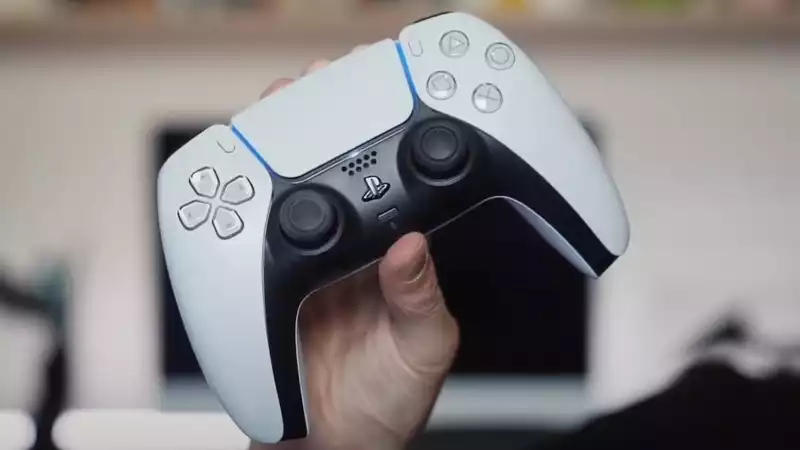It's no secret that I do not like the PS5's DualSense controller. Compared to the beautifully simple Xbox Series X controller, the DualSense has a lot of wasted space, questionable button placement, and some odd connection limitations. The biggest problem for me, however, was that the innovative haptics felt more like a hindrance than an immersion experience. At least, that was the case until I reached the final level of Demon's Souls.
For those who haven't played it yet, Demon's Souls is the best game on the PS5 and probably the best game I've played this year. (Of course, it was also one of the best games of the year when it first launched in 2009, but I digress.) Like the PS5's other exclusive launch titles, Demon's Souls makes extensive use of DualSense's subtle tactile feedback.
But unlike Spider-Man: Miles Morales, I didn't find it off-putting here; DualSense made for one of my favorite parts of Demon's Souls Remake.
In case you haven't tried the DualSense controller yet (I know the PS5 isn't very easy to get your hands on right now), it is quite different from the DualShock 4. The grip is longer, making it similar to an Xbox controller, and the light bar is on the front of the controller so you can see the light bar during gameplay. The biggest difference, however, is that the DualSense has very sensitive tactile feedback.
With DualSense, you don't just "feel" a different degree of vibration, but subtle effects such as different weights on the left and right sides of the controller, or a different trigger response when you fire a gun. Although very difficult to explain without actually holding it in one's hands, the Dual Sense can mimic the subtle sensations of movement and action.
While the DualSense has generally received high praise (including reviews of the PS5), I'm a bit more reserved than most controllers. My gut feeling is that anything that puts distance between you and the on-screen action is more of a gimmick than a gameplay feature. This includes motion controls, touch controls, and even the vibration itself - although I've grudgingly come to accept the vibration controller since the N64 days.
I never understood why the trigger locked halfway every time I tried to release the web in "Miles Morales" or why I had to breathe on the controller in "Astro's Playroom". The Nintendo DS tried a number of similar things when it first launched, but generally speaking, the best games on the DS were more traditional, rather than leaning on the console's strange control scheme.
Of course, if you don't like the dual-sense haptics, you can always turn them off, but I left them on in case I found a truly legitimate use for them, and "Demon's Souls" did not disappoint.
The next section has a few minor spoilers for the late-game levels of "Demon's Souls," so read at your own risk.
For most of the game, I found the haptics in "Demon's Souls" to be as distracting as in "Miles Morales". Playing without headphones, one hears a large number of sound effects from the controller, ranging from the whoosh of arrows to the crackle of magic spells. Additionally, the controller vibrates differently when you are crossing swords with an enemy, crossing a crumbling bridge, or winding a crossbow. Demon's Souls is a very tough game and requires full concentration. No matter how innovative the haptics may be, it is precisely the aforementioned situations that have the potential to divert attention from what is happening on screen.
It wasn't until much later in the game that I realized that DualSense could do what a simple vibration controller could not. Late in the game, you have the opportunity to rescue a brave warrior named Biol of the Twin Fangs. When the dreaded blue dragon blocks the entrance to the final boss's room, Biol unselfishly plunges into the dragon's path and declares that he will fight the beast with him. It's a rousing moment in a game that tends to be deadly.
Any Demon's Soul veteran knows that the best way to fight a blue dragon is with a bow. So I let Viol draw the dragon's fire and fled directly under the massive beast, out of reach of the fire. As I drew my bow and released my arrow, I noticed three very subtle things happening simultaneously: each time the dragon breathed fire, the lower half of the dual sense made a slight noise and there was an earth-shaking impact behind me. At the same time, each time I pinched the arrow, the right trigger locked in the middle and released when I fired. Finally, a "whoosh" sound came from the controller's speaker, followed by a thud to let me know the arrow had hit the target.
Slaying the Blue Dragon was a time-consuming task, but in the end, the dual senses made me feel like I was really fighting off a mythical beast, rather than simply repeating effortless motions. To be fair, the Blue Dragon fight is not one of the better boss fights in Demon's Soul. However, the dual sense elevated it to something at least a little more exciting.
My stance on Dual Sense is tempered; "Demon's Souls" is a 30-hour game, and the PS5 controller is significantly better than its PS3 predecessor for only about five minutes. Still, it gives me hope that the developers will continue to refine the dual senses and find a way to make them blend casually into the gameplay.
I'm not sure if one excellent encounter in one excellent game is enough to completely change my opinion of the PS5 controller, but it's certainly at least a good start. If DualSense can provide more magical moments like the Blue Dragon encounter, it may justify the odd design choice for this peripheral.
.









Comments